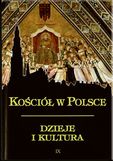MISYJNE DROGI KOŚCIOŁÓW WSCHODNICH
Missionary paths of the Eastern Churches
Author(s): Stanisław NabywaniecSubject(s): Christian Theology and Religion, History, Cultural history, History of Church(es), Political history, Theology and Religion
Published by: Katolicki Uniwersytet Lubelski Jana Pawła II - Wydział Teologii
Keywords: The Eastern Orthodox Church; The Dessert Fathers; The Byzantine Church; Missionaries of the Eastern Churches
Summary/Abstract: The essence of mission in the realm of the Eastern tradition, i.e. that of the Byzantine, means to be a witness of God. According to the understanding of the Orthodox Church, mission is more centripetal than centrifugal. It depends on the internal strength of the Orthodoxy to draw people from outside into its core, instead of sending missio- naries inside out to beyond the boundaries the Church, in order to attract new followers. Orthodox churches of the Byzantine tradition, however, even in a period of internal dif culties, did not stop proclaiming the Gospel to the Gentiles. Their successes in mission works in the 9th century, bear great importance for Christianity - the future of Europe and its civilization.The Nestorian played a signi cant role in proclaiming the Gospel, particularly in Central Asia. In Byzantine, the missionary work was undertaken by Rus‘, rst by Kievan Rus‘, then by Vladimir-Suzdal Rus‘ and later on by Muscovy Rus‘. As a result, Christianity was spread throughout the entire European part of today‘s Russia, further on towards the boundary-less territories of Siberia, as well as Alaska, China, Korea and Japan. The rst Ruthenian missionary centers were mainly colonies of monks. But there were also centres composed of priests and lay people. After the success in the late Middle-Ages and early modern times, the Russian Orthodox Church in the 17th and 18th centuries made little progress as far as missionary work is concerned. In the early 19th century, the Russian Orthodox Church underwent a spiritual renewal and had rediscovered the fullness of Orthodoxy. She „felt“ the need to share her faith with others. The establishment of the Orthodox Missionary Society in Moscow in 1870 had facilitated missionary activities of the Russian mission. However, the outbreak of the Bolshevik Revolution in 1917 had suddenly and brutally interrupted all missionary works of the Russian Orthodox Church. Instead, these activities were carried out by other Orthodox Churches.
Journal: Kościół w Polsce. Dzieje i kultura
- Issue Year: 2014
- Issue No: 13
- Page Range: 209-224
- Page Count: 16
- Language: Polish

